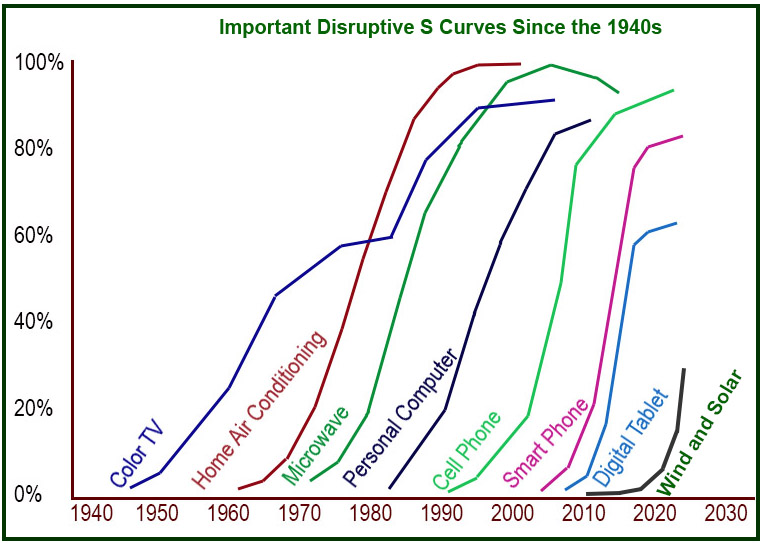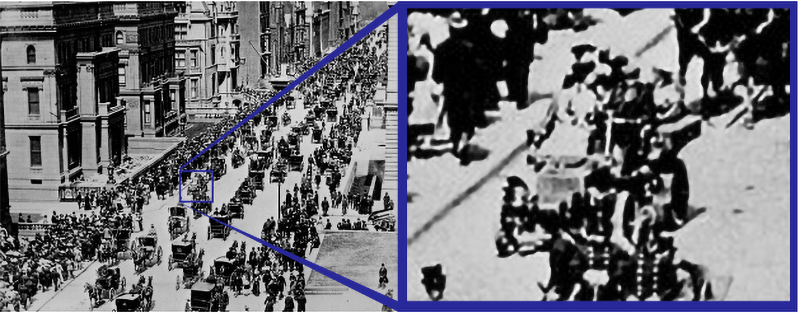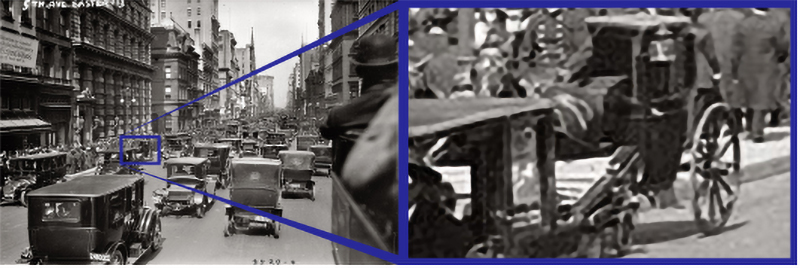INTRODUCTION | CHAPTER 1 | CHAPTER 2
CHAPTER 2:
Even so, the News Isn’t All that Bad.
We will never stop producing CO2—we even exhale it. To win this battle with global warming, we need to take more CO2 out of the atmosphere than we put into it—that equals a less-than-zero carbon footprint. Our goal, then, is a negative carbon footprint. How is that possible? Well, the Earth does a lot of it for us: trees, grass, limestone and basalt rock, the oceans, and other natural objects and conditions absorb and lock away CO2.
A short, related story: Yeast in a carboy full of grape juice consumes the sugar and converts it into alcohol. After a few days of this process, the weaker of the yeast begins dying. Yeast scientists discover why the weaker yeast die and warn the yeast population that they need to quit turning sugar into alcohol, or they will all die. But the yeast continues turning sugar into alcohol because that is what yeast do. Then one day, they reach a tipping point, and the yeast quite suddenly all die. Over time, they all settle to the bottom of the carboy, a thick layer of dead yeast.
The Earth is exactly that carboy. We are converting fossil fuels into too much carbon dioxide. Although, unlike the yeast, much of pur poison (CO2) is absorbed and sequestered by plants on Earth and at sea, rock formations, rainwater, and various other carbon sinks. Even so, we are exhausting much more CO2 than the carbon sinks can absorb.
There has been no balance since the ice age. The Earth has slowly been warming since then, albeit cyclically. We, however, have tipped the balance in a big way. Although a great deal of CO2 is still being absorbed by the carbon sinks, we are producing far more than the Earth can sequester. Like the yeast, we are in danger of poisoning ourselves, and, like the yeast, the answer is to produce no more poison. That way, over time, the CO2 level will equilibrate (and even begin to drop).
How burning even more fuel will begin to save us.
We can reach a sustainable equilibrium by only using fuel that is either carbon neutral (like the sun or wind) or is carbon negative. Some combustible fuels are carbon-negative and can be used to replace fossil fuels. For example, we can grow huge masses of algae. About half of algae's carbon is biomass, and about half is oil. The oil can be broken into 10% glycerol and 40% biofuel. The glycerol goes into a product (sequestering that carbon), and the oil is used as energy (releasing that carbon as CO2). The biomass can be used for a variety of purposes ranging from supplements to biochar to fertilizer. Most of these things end up keeping the carbon out of the atmosphere (sequestering it). Under such conditions, if the fuel is produced using zero-carbon fuel, the cycle is, 100% CO2 removed from the atmosphere, and only 30% to 40% returned. In that case, we have a fuel with a negative carbon footprint – the more we drive, the better the atmosphere gets. This was one of those things the oil industry never wanted us to find out.
There are few circumstances. today, where we can find fuel with a less than zero carbon footprint, but as we progress, I will show some of them to yo , and, more importantly, show you how it will be done.
But in one example, electric energy in Vermont has a near-zero footprint because most of their energy comes from biomass waste. One hundred percent of the carbon in a tree comes from CO2 that comes from the atmosphere. Around 20% of that tree becomes fuel, while 80% becomes sequestered in buildings, furniture, and other structures. Meanwhile, the trees are replaced with new trees.
We should not be using food as fuel.
Most of the ethanol currently being produced is made of corn, sugar beets, sugar cane, and the like -- food. Making ethanol from food is unsustainable. Millions of Americans go to bed hungry every night. Solving hunger is the number one United Nations sustainability goal. Food should be food and not fuel. On the other hand, making synthesis natural gas (syngas) from corn stalks is sustainable because corn stalks are waste material and represent only part of the CO2 the corn extracted from the atmosphere. Moreover, it is possible to capture much of the CO2 from syngas exhaust, so minimal CO2 is released into the atmosphere.
We can convert any carbon-based waste into fuel. The possible fuels produced from waste can be syndiesel, syn-kerosene, syngas, or whatever else we want. These fuels do not burn perfectly clean, but they burn much cleaner than fossil fuels, and while this is going on, we are producing more trees, grasses, farm waste, and such, so that whatever CO2 we have emitted can be more than offset by CO2 we are pulling out of the atmosphere. That describes a circular process that is part of a circular economy (we pull more CO2 out of the atmosphere than we exhaust into the atmosphere).
In some cases, we can use solar, wind, hydro or the like to split water into hydrogen and oxygen. When we burn that combination, the exhaust is water vapor that can be recondensed and returned to the reservoir to become fuel again. You have already heard me say, “We can even pull CO2 out of the atmosphere and turn it into synthetic gasoline.” Just thought you might enjoy hearing it again.
So, the news is pretty good.
Right now, renewable energy is on the verge of becoming one of the most important industries worldwide. Just as the personal computer, Internet, email, cloud computing, and cell phone seemed to appear suddenly and out of nowhere, so will renewable energy sources seem to suddenly be here. In fact, they are already here, mostly unnoticed. We just need many more of them.
Causal feedback loops (disruptive x-curves) will flip the energy industry, and newer, cheaper, and better (greener) fuels will replace the older, more expensive, and destructive ones. Here is why that is going to happen.
Disruptive Forces and Impending Doom
The movement toward new and clean fuels is an existential threat to the entire fossil fuel industry. I believe that we are now watching the arrival of the doom of that industry, and it is much closer than most people realize. The fossil fuel industry has known it was coming for decades – it was just a matter of time – and they fought it tooth and nail for 60 years. Disruptive forces are occurring even now, and they are going to completely change the way we do things and the fossil fuel companies, their politicians, and other allies will be powerless to stop it.
Most people haven’t noticed, but coal fired power plants are dropping like flies; coal power plants represent 75% of all utility plants being decommissioned every year, along with another 25% of decommissioned gas-powered plants. It costs billions to build a coal-fired power plant and millions more to power it. If you have sticker shock at the cost of filling up your auto, imagine the utility company’s sticker shock when they buy their coal by the train load and burn a train load of coal daily.
In the past, at ~3.2¢ /kWh (excluding the cost of building the plant), coal was the least expensive source of electric energy. But there is ~5.6¢/kWh in additional costs in terms of health and damage to the atmosphere. Brookings
On the other hand, solar farms cost millions (as opposed to billions), and the power costs .02¢/Watt, or less (including the cost of building the solar farm), with no penalty for damages to health or the atmosphere.
Considering that energy companies produce Watts by the trillion, anything that costs one cent less than the competition is a game changer, and solar and wind just keep getting cheaper! Average construction costs for solar declined from $5,100/kWh to $876/kWh between 2010 and 2022 (down 83%). Average construction costs for construction of onshore wind energy declined from $2179/kWh to $1274/kWh over the same period (down 42%). Average offshore wind energy declined from $5217/kWh to $3461/kWh (down 34%).
The cost of constructing coal-fired plants has grown from `$1500/kWh to ~$3500/kWh (an increase of more than 100%). Such an increase in the cost of building a new plant will send the price of coal-fired power through the roof while wind and solar costs continue to fall.
Worse for the coal industry, these coal-fired power plants store the ash from their fires in huge open-air pits without linings. This ash contains lead, arsenic, and other heavy metals, and the EPA has ruled that these plants can no longer store their ash in unlined pits. As if things were not bad enough for them, they have to line a million or more gigantic pits already full of poisonous ash.
What makes some new systems disruptive?
A person might invent a new faucet that doesn’t freeze in the winter and put it on the market for only $200. But frost-free faucets have been available for more than a hundred years and cost only around $75. Most new products are like that. They come onto the market and soon disappear because nobody ever asked for them. These are called “push products” because they are being pushed at us whether we want them or not
On the other hand, someone might invent something that meets and even exceeds our needs. They present us with a product that changes how we think about how things can be done. At first, a product might be expensive and cumbersome, and people might even laugh at it. For example, the first Internet message ever typed was “LO,”. . . and then the Internet crashed. But when all the elements come together, everything changes virtually overnight. It becomes a “pull product,” something we want – even need – something we demand! Acceptance looks like this:
- First, the early adopters acquire the product and test it.
- If the product meets their needs, more early adopters buy the product.
- On a chart, a curve slowly bends up from the zero plane.
- Then more early adopters try the product.
- As about 10% of the population have purchased the product and are excited by it, word spreads from the inner circle into the population.
- The general population is persuaded, and they buy the product pretty much all at once. The curve changes from a slowly climbing curve at the bottom to an almost straight line right to the top.
- The product becomes increasingly cost-effective and more useful.
- After the product has reached full saturation, a gentle curve forms at the top as new purchases come only from the need to replace old versions of the product.
Personal computers
A disruptive technology seems to appear from nowhere to replace old ways of thinking. We typed on electric typewriters, using white, chalky tape to make corrections. We could change typeballs, we had dictionaries, thesauruses, style guides, dictation machines, snail mail, carbon paper, paper clips, overhead projector slides, and the list goes on. That entire industry was replaced in under 10 years.
We can find the use of computers going all the way back to the 1940s, but those computers were slow, clunky, limited in their capacity, and could fill a room. MIT's Whirlwind computer covered more than 2,000 square feet, and only a few people knew how to use it. Every single thing the programmer wanted to do had to be programmed—sometimes, the programming was done with wiring that looked like boot laces (called bootstrapping or booting). Once the computer was programmed, it was turned on, and the program ran.
In the late 1970s, we began seeing personal computers . . . Commadore, Altair, Timex Sinclair, Acorn Archimedes, Apple II, Amiga, and then the Mac and the IBM PC (plus its many clones). It was perhaps five years before the best of the PCs caught on, but once they took hold, an entire communication industry was displaced in a matter of years. First, we stored all of our content on 5.25” floppies, and a decade later we were putting our content onto external hard drives containing terabytes of memory. The very definition of communication was changed. Now, I have half a dozen portable drives, each the size of a deck of cards, and if I want to, I can back my content up in something called “the cloud” (but I don’t because “the cloud is just somebody else’s computer).
Disruption by the Internet
Think back a decade or two. There was this new thing called the Internet. Before the Internet, there was a military research test network called ARPANET. In 1990, ARPANET was decommissioned and replaced by the Internet. Between 1990 and 2000, the Internet grew from barely functional to a network that permitted us to instantly communicate around the world—a network that permitted us to work together from anywhere on Earth.
In another ten years, the network was capable of showing high-resolution movies and allowing us to communicate with programs we cannot distinguish from humans . . . from unheard of to useful in only a few years and from there to indispensable in another 10 years. From being unable to handle the command, “LOGIN” to our most significant tool for communication and entertainment.
Today, devices communicate with each other over the Internet with no human involvement – it’s called “the Internet of things.” The Internet, and all those things it brought with it are called “disruptive” technologies. They become “pull technologies” -- technologies we demanded.
A short, related story: In 1983, I took a project into a specialized printer. The problem was that we wanted to use a photo of a construction worker in an ad, but in the photo, the man was working without a helmet (a big no-no in construction). The print company had a new computer with a graphics component that could take a hard hat from one photo and put it on that man. That computer filled a small room and took 3 full-time programmers to make it work, and it cost $750,000. A year later, I bought a PC for $1,200, and in 1994, I bought my first copy of photoshop for $250 to help me build digital art while designing websites.
Remember the phone booth?
If you needed to make a call from a remote location, you needed to find a phone booth and some dimes. The first hint of something new that might be disruptive was the Motorola DynaTAC 8000X telephone. It allowed a person to talk to anyone around the world via satellite. The idea of a phone you could pick up and call anybody on Earth was groundbreaking. But there were problems. The thing was the size and weight of a brick. It was slow to charge and only kept a charge for around 30 minutes, and it cost $3,600. After the initial excitement, sales of the phone languished. It got the nickname “the Brick” because it was big and heavy, and everybody thought it was a stupid idea. As I have already mentioned, before the new technology matures, it often seems laughable.
Then came the flip phone: After a few years, Motorola produced a slightly different idea, to communicate via microwave cell tower, and they developed the first flip phone in 1996. By 2000 (4 years later) the cell phone enjoyed universal acceptance and became the lever that made the smart phone possible.
Smart phone: The smart phone is really a battery powered computer sporting a phone, a camera capable of excellent photography and videography, and access to the Internet, and it was almost instantly universally adopted. From the first flip phone to the production of the smart phone took only four years. For the smart phone to replace the cell phone took months. And now, try to find a phone booth.
Renewable energy is doing the same thing.
Evidence from the Feds: The United States Energy Information Agency (US EIA) produced the chart below. It shows the trend of wind and solar power between 2010 and 2025. Note the steepness of the curve that projects their rise after 2020. Between 2020 and 2030 wind and solar output in the United States is projected to rise from around 42gWh to 140gWh. Today, around 30% of electric energy comes from renewable fuels. It is estimated that by 2035 around 90% of United States utility electricity will be renewable. If that is the case, we will be right on schedule with cleaning up the energy sector, and the fossil fuel companies will have become dinosaurs. If past disruptions are to be believed, in only a decade we will be in an age where wind, solar, batteries, and power from renewable fuels has replaced ExxonMobil, Chevron, BP, OPEC, and the American Petroleum Institute. U.S. Energy Information Administration

Figure 2.1: The graphs above show the current state, projected to 2024, of renewable energy in the United States, and projects their future over the next five years. (Energy Information Agency)
The graphs above show two things that are similar but not quite the same. The one on the left shows the total maximum capacities of wind, hydro, and solar. Hydro stays constant because there is not much change in its maximum capacity. We are not building a lot of new dams. Wind and solar, however, are growing exponentially. By 2024, solar has doubled its 2020 level – doubled in four years. Wind energy caught on earlier and is nearer full saturation. Still, between 2020 and 2024 it will increase by about 40% -- with output from around 110gWh/hr to around 155 gWh/hr.
The second chart measures output. Hydro is up and down because conditions at the various hydroelectric dams change. Wind energy output is little changed, because the places they build these windfarms are almost always windy. Solar lags because there are fewer solar farms and solar is more intermittent, only working for about 1/3 of the day, on its best days. Even so, solar still shows the same exponential curve as wind energy.
RethinkX and the disruption of the fossil fuel economy
According to a group of researchers in a think tank called Rethink X (RethinkX.com),
History shows that technology disruptions are nonlinear because they are driven by reinforcing causal feedback loops. These loops interact with and amplify one another, accelerating the adoption of replacement technology in a virtuous cycle while at the same time accelerating the abandonment of old technology in a vicious cycle. The net result of these systems dynamics is that disruption tends unfold with surprising swiftness. RethinkX

Figure 2.2: Graph explaining how a new and better system can very quickly replace an older, less efficient system.
(DigitalMedia R&D, based on graphics by RethinkX)
Disruptions happen suddenly and usually with no warning. If we think back through the years, we can see many examples. In Figure 2.3 you can compare innovations of the 1950s and 1960s, to innovations that sprang up in the 2000s. You may notice that as the years progress, the disruptive “S” curves become steeper.

Figure 2.3: A series of “S” curves that begin rising relatively gently as early adopters embrace the products
and then rise exponentially as the products are demanded in mass by the entire community. (DigitalMedia R&D)
As figures 2.1 and 2.3 imply renewable energy (wind and solar with batteries) are following the same exponential trend. Color TV took decades to reach maximum adoption. air conditioning, microwaves, and PCs were adopted more quickly, taking approximately 10 years each. But the smart phone, and digital tablet were adopted in only a few years, each. Renewable energy is on the path to repeating those disruptive curves.
We shouldn’t be surprised by disruptive curves, but we always are.
So, I mentioned the disruptive force of the computer, Internet, and smart phone. How about something older – the horse and buggy? Disruptions are not new. In 1900 some unknown photographer shot a photo of the Easter Parade on 5th Avenue in New York (Figure 2.4 below). There were tens of thousands of pedestrians filling the sidewalks and there were thousands of horse-drawn carriages choaking the Avenue . . . with only one automobile on the crowded street. Compared to the carriages with their teams of horses, the one relatively tiny auto was almost impossible to spot.
For around 7000 thousand years, the horse had been the engine of choice for our labor and personal transportation. A person might have three or four horses for doing different things (e.g., plowing with a work horse, pulling a surrey with a pony, a carriage with a team of trotters or a wagon with draft horses).
There were whole industries surrounding the horse. They had to be fed, and in the city someone was designated to clean up after them. At home there was a carriage house and a tack room full of harnesses, carriages, and horse-related hardware, and factories that manufactured all of that stuff.

Figure 2.4: 1900 Easter Parade on 5th Avenue in New York, with hundreds of carriages and one car parading up and down the street . . . where is the car? (United States National Archive)
In 1913 there was another photo of the 5th Avenue Easter parade from approximately the same place. In this photo it is difficult to pick out the only carriage on the street. In a period of 13 years, the city went from almost entirely horses to entirely automobiles, but there’s more. Moving from horses demanded the old horse and carriage-based infrastructure be abandoned and new infrastructures be embraced, including service stations, garages, vulcanized rubber tires, roadside restaurants, and motels, and, of course, paved roads, all creating more disruptive S curves like the ones in the figures above.

Figure 2.5: 1913 Easter Parade on 5th Avenue, with thousands of automobiles and a single horse-drawn carriage -- 13 years from one state of being to the other. (United States National Archive)
So, we are in the midst of multiple disruptive changes.
Because so many people are working on the problems, we see new tools emerge almost daily. In 20 years, we will be living in a new reality. It might be one in a sad future (we might not make the cut), but there is a good chance we will be in an amazing and wonderful place where all the energy we use has a less-than-zero carbon footprint and is virtually free. The rest of this book explores how this can happen.
